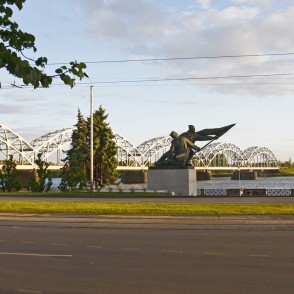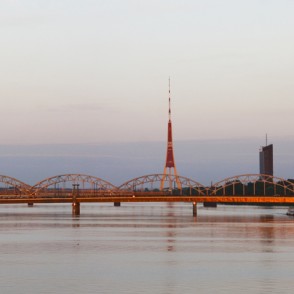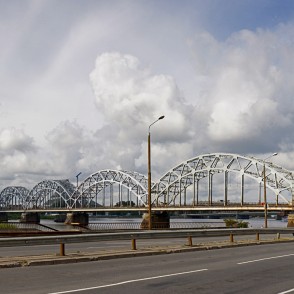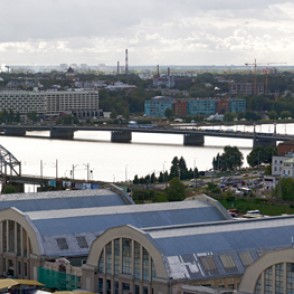The Railway Bridge (Latvian: Dzelzceļa tilts) is a bridge that crosses the Daugava river in Riga, the capital of Latvia.
The first iron railway bridge in Riga, over 600 ftm long, was erected in 1871–1872 for the Riga–Jelgava Railway.
The new bridge was inaugurated 1914, shelled twice, during World War I in 1917 and World War II in 1944, and was rebuilt both times. The bridge is nowadays the only railway bridge in Riga.
The bridge will be duplicated as part of the new Rail Baltica line through Riga.
en.wikipedia.org
The first railway bridge over the river Daugava was opened on 1 January 1873 in the line Riga-Bolderāja.
Before the First World War the bridge was recognized as unsuitable for intensive traffic. Therefore, in 1914 a new railway bridge was built, but the former one was sold to the Council of Riga to provide traffic across the river.
The construction of the new railway bridge was connected with Riga railway junction reconstruction plan of Riga-Orla railway, confirmed on 27 February 1902.
The construction of the bridge was started in 1909 and the opening was celebrated on 11 May 1914. The bridge had eight spans and an open span on the right bank of Daugava and operated with two electromotors. They were constructed following the system introduced by an engineer Sercer. The trusses were designed by the engineers – P. Voznesenskis and A. Zibers. They were made in Warsaw. The piers were made by an engineer A.Cimmermanis by using limestone from Kalnciems, granite from Krāslava, stones from Finland for the starlings.
During the First World War on 2 September 1917 two spans of the bridge were blown up when the 12th Russian army drawn back. The German army reconstructed the bridge and it was used until the Second World War.
At the beginning of July 1941 the bridge was blown up by the sappers of the Red Army. The German army reconstructed the bridge, but in October 1944 all the spans were completely destroyed when the German army drew back.
From 1945-1951 traffic across Daugava was organized by using the temporarily built Soviet army bridge, which was constructed in the same place as the previous bridge over Daugava.
The present bridge was built from 1947-1950 on the piers of the bridge constructed in 1914. It was planned by an engineer A. Starcevs.
www.ldz.lv



















